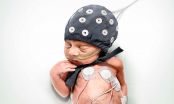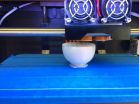(Press-News.org) Polymer solar cells are a hot area of research due to both their strong future potential and the significant challenges they pose. It is believed that thanks to lower production costs, they could become a viable alternative to conventional solar cells with silicon substrates when they achieve a power conversion efficiency--a measure that indicates how much electricity they can generate from a given amount of sunlight--of between 10 and 15 percent. Now, using carefully designed materials and an "inverted" architecture, a team of scientists has achieved efficiency of 10 percent, bringing these cells close to the threshold of commercial viability.
Polymer-based solar cells offer a number of potential advantages. They are made of polymers that are inexpensive and flexible, and can be deposited on glass or plastic substrates, allowing the construction of large-scale structures. They are cheaper to manufacture, and more environmentally-friendly, than their silicon counterparts. Unfortunately, they have lower power efficiency due to their structure and also tend to degrade more quickly.
In the research published in Nature Photonics, a collaboration including Itaru Osaka and Kazuo Takimiya of the RIKEN Center for Emergent Matter Science managed to create a type of polymer solar cell called a bulk-heterojunction solar cell--where the electron donor and acceptor layers are mixed together--with a power conversion efficiency of 10%, close to what will allow these materials to be commercially viable.
According to Osaka, "While private firms have been able to develop cells with similar efficiency, they have done so using proprietary technology, so that it was not possible to know why things were working the way they were. We began experimenting with a substance called PNTz4T, which we had previously developed, and were able initially to achieve a power conversion efficiency of about 8%, with a fairly thick active layer of about 300 nanometers. Surprisingly, though, we found that when we used an inverted architecture, where the light enters through a transparent negative electrode, in our case made of zinc oxide, we found that the cell with the inverted architecture had better efficiency, which is abnormal for cells of the type we built. We believe that it is due to the alignment of molecules inside the mixed layers."
The researchers analyzed the composition of the materials using the SPring-8 synchrotron facility in Harima, and found indeed that in the inverted model, the orientation of the molecules within the active layer was very commonly "face-on," an orientation well suited to the transport of electron holes through the material. Takamiya says, "We surmised that this was the secret to the success in the experiment. It turns out that by trying something that might seem unusual, we got a surprising result, and through this were able to understand something about what makes cells more or less efficient."
According to Professor Hideyuki Murata of the Japan Advanced Institute of Science and Technology, who participated in the research, "This is an exciting result because we now have an understanding of how we can move forward to create polymer solar cells with greater efficiency. We hope that researchers around the world will be able to make use of these results to create commercially viable cells."
INFORMATION:
The work was done in collaboration with the Japan Advanced Institute of Science and Technology, Hiroshima University, and the Japan Synchrotron Radiation Research Institute (JASRI). It was funded by the Japan Science and Technology Agency (JST) under its Precursory Research for Embryonic Science and Technology program.
Giant strides have been taken in the early care of very premature infants in postnatal intensive care units during the past two decades. Doctors can now support the function of especially the lungs, heart and the circulatory system so as to guarantee the survival of most of even extremely premature infants.
Despite a good start, many of these may still have lifelong problems with brain function, such as attention deficit disorders or difficulty with visual function. For this reason, the primary focus of developing care for premature infants has been on securing brain ...
HANOVER, N.H. - If you're a college student wondering how your study and party habits will affect your GPA, wonder no longer. Dartmouth researchers and their colleagues have built the first app that automatically predicts college students' grade point average based on their smartphone data.
The findings offer new ways to improve students' performance, providing real-time feedback on their studying, partying, sleeping, exercising and other conscious and unconscious behaviors to help them stay on track academically.
Dartmouth computer science Professor Andrew Campbell, ...
BLOOMINGTON, Ind. -- Air pollution regulations issued by the U.S. Environmental Protection Agency are estimated to save thousands of lives annually. A new study by researchers at Indiana University says these estimates are more uncertain than commonly believed.
Researchers Kerry Krutilla, David H. Good and John D. Graham of the IU School of Public and Environmental Affairs analyzed the costs and expected lifesavings of nine regulations issued between 2011 and 2013. The bulk of these regulations require national emissions standards for hazardous air pollutants. The analysis ...
PITTSBURGH, May 26, 2015 - Researchers at the University of Pittsburgh School of Medicine have identified two new classes of RNAs that are closely associated with a protein known to be a prognostic biomarker for breast cancer and could play a role in progression of prostate cancer. Their findings were published in the June issue of the scientific journal RNA.
Levels of human Y-box binding protein 1 (YB-1), which is involved in many cellular functions, have been shown to correlate with drug resistance and poor patient outcomes in a variety of cancers. The observation that ...
When Walt Disney created Mickey Mouse, he didn't give much thought to how he might bring his character to life in the real world. But robotics now puts that possibility within reach, so Disney researchers have found a way for a robot to mimic an animated character's walk.
Beginning with an animation of a diminutive, peanut-shaped character that walks with a rolling, somewhat bow-legged gait, Katsu Yamane and his team at Disney Research Pittsburgh analyzed the character's motion to design a robotic frame that could duplicate the walking motion using 3D-printed links and ...
College Park, Md and Annapolis, Md -- A new study from researchers at the University of Maryland (UMD) and the National Socio-Environmental Synthesis Center (SESYNC) demonstrates that the highly contentious debate on climate change is fueled in part by how information flows throughout policy networks.
The UMD and SESYNC researchers found that "echo chambers"--social network structures in which individuals with the same viewpoint share information with each other--play a significant role in climate policy communication. The researchers say that echo chambers may help ...
Ask any molecular plant biologist about RNA extractions and you might just open up the floodgates to the woes of troubleshooting. RNA extraction is a notoriously tricky and sensitive lab procedure. New protocols out of the University of Florida are quicker, more effective, and more reliable than previous methods.
"Obtaining pure and intact RNA samples is essential for sequencing the active genes, or the transcriptome, of a plant," explains botanist Ingrid Jordon-Thaden, who developed the protocols.
The protocols are given in bench-ready form with detailed notes and ...
Adam C. Levine, M.D., an emergency medicine physician at Rhode Island Hospital found that the World Health Organization's current weight-based guidelines for assessing malnutrition in children with diarrhea are not as reliable as measuring the child's upper arm circumference. His research was published in the Journal of Nutrition.
Diarrhea is common among children who visit health facilities in developing nations. The traditional measures for determining whether a child is moderately or severely malnourished are based on assessing the child's weight directly. Levine found ...
Old-school field work meets cutting-edge technology! For decades, researchers have been making artificial eggs out of plaster, wood, and other materials to test how birds identify and reject the eggs that invading "brood parasites" sometimes sneak into their nests. But these methods have many limitations, and a new study published in the open-access journal PeerJ is the first to test the usefulness of 3D printed eggs for research on egg rejection.
Brood parasites are birds that don't build nests of their own. Instead, they slip their eggs into the nests of other species, ...
Scientists at the Molecular Medicine Institute in Lisbon, Portugal, and at the University College London Ear Institute, United Kingdom, have developed a simple and efficient protocol to generate inner ear hair cells, the cells responsible for our hearing and sense of balance. This study is an important step for the future production of large numbers of these cells for use in cell transplantation therapies or large-scale drug screens. The research has just been published in the scientific journal Development at http://dev.biologists.org/.
Sensory hair cells located in ...


